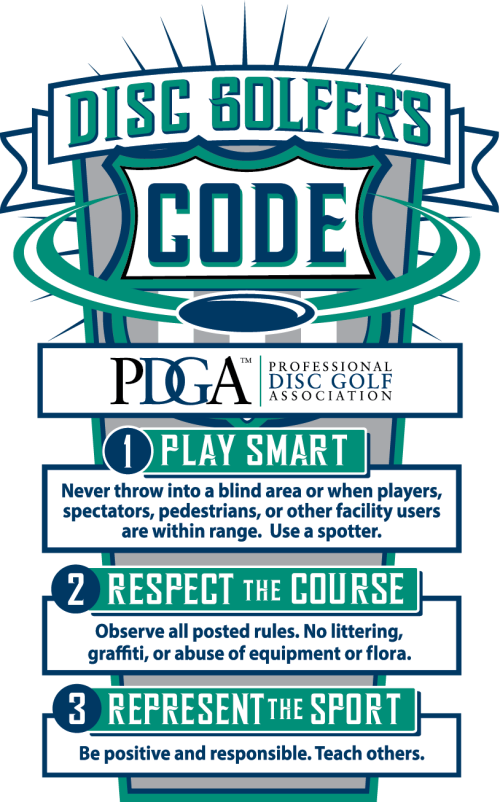Home | Sport | Sport Standards | Players Code
Like any sport, disc golf has a strong set of rules that cover all possible situations. Nevertheless, here are the basic rules to get you off to a good start in our world of flying discs.
The first and most important rule is to be considerate of other players, park visitors and nature. We want to have fun together in the fresh air. Therefore, you must not throw if there is a chance that your throw could endanger others. If in doubt, wait and seek friendly contact. This also applies to the park in which you are playing. Please do not leave any garbage behind and help by collecting other people’s garbage and throwing it in the appropriate bins on site. This helps us all!
In addition to the motor skills involved, a successful round is also a psychological challenge and requires concentration and self-control. It is therefore good manners to keep quiet in the vicinity of the throwing player, i.e. to stand still, not talk loudly or cause any other distraction. Furthermore, it is in the general interest to get away from the anger of a failed throw as quickly as possible. You lose concentration for the next throw and the other players miss out on positive feedback.
Now you can start. The aim is to throw the disk from the tee pad into the basket with as few throws as possible. After each throw, the game continues from where the disk came to rest. The player whose disk is furthest away from the basket takes his turn, the rest of the players stand behind or next to the throw-off point (“lie”). You can mark your disc with a marker (mini disc) and then continue playing with this or another disc. Pay attention to the markers on each lane for special features. Out-of-bounds (OB) zones and mandatory obstacles (Mandatories) are marked there, which must be observed. If your target comes to rest in the OB or misses a mandatory, you will receive a penalty throw.
There are lanes where the basket cannot be seen. Here, it is mandatory to spot, i.e. the player whose turn it is last goes first and checks whether the field and the surrounding OBs are free of passers-by and their pets and signals this to the player whose turn it is to throw:

We would particularly like to draw your attention to the “Disc Golfer’s Code”. A great initiative by the PDGA, the Professional Disc Golf Association, which is also responsible for the rules. Take a look at it and please implement it: https://www.pdga.com/code